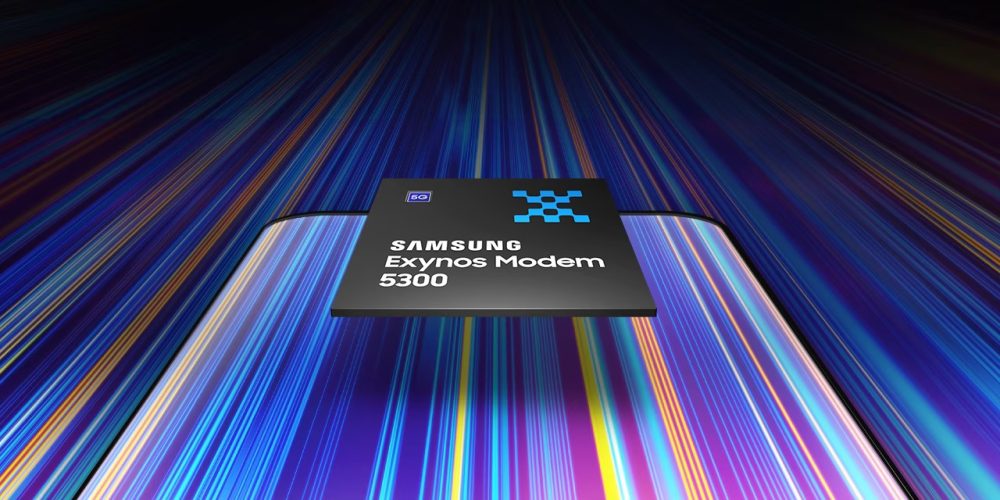
Months after it hit the market, Samsung is finally revealing the details of the Exynos 5300 modem it supplies to Google for the Pixel 7 series, as well as the upcoming Pixel 8.
Google Tensor and Tensor G2 are chips designed by Google itself but with roots heavily in Samsung’s Exynos chips. With the switch to Samsung, Google gave up on using Qualcomm’s Snapdragon chips and their accompanying modems, which have shown time and time again to provide the best connections to cellular networks.
That was a problem for the Pixel 6 series, which suffered from weaker connections compared to devices with Qualcomm radios. But with the successor, Pixel 7 and Pixel 7 Pro, Google integrated a new modem into Tensor G2 by the name of Exynos 5300 and with major improvements across the board as we tested last year.
Related: Google Tensor G2: How has the signal strength and speed improved on Pixel 7?
Samsung is now finally providing more details on the Exynos 5300 modem, with a new spec sheet offering up more context around the chip. This comes as the modem is being made available to other devices – apparently, Google managed to get early access exclusively, as no other devices have launched with the 5300 thus far.
Samsung says that the Exynos 5300 is significantly faster, more reliable, and more power efficient compared to its predecessors. The new modem, built on a 4nm process, is capable of delivering 5G download speeds of up to 10GBps with upload speeds of up to 3.87Gbps.
The Exynos Modem 5300 provides blazing fast 5G speeds and ultra-low latency with support for FR1, FR2 and EN-DC technology. With up to 10Gbps download and up to 3.87Gbps upload speeds, the Exynos Modem 5300 enables devices to deliver the next-generation user experience. Make the most of your mobile experience today, with super quick speeds.
It’s further noted that on LTE networks, the 5300 can handle 3.0Gbps download and upload speeds up to 422Mbps.

Samsung doesn’t offer any specifics on power efficiency but says that the “4nm EUV process… improves power efficiency” over the Exynos 5123 and extends battery life. It also supports 3GPP’s 5G NR Release 16. The full modem specs follow:
5G NR
- 3GPP Rel. 16
- Sub-6GHz
- mmWaveNSA/SA
Supported Modes
- LTE-FDD
- LTE-TDD
- HSPA
- TD-SCDMA
- WCDMA
- CDMA
- GSM/EDGE
Downlink Features
- NR DL aggregated bandwidth
- 200 MHz for sub 6GHz
- 800 MHz for mmWave
- 4×4 MIMO in sub-6GHz
- 2×2 MIMO in mmWave
- Up to 256-QAM in sub-6GHz
- Up to 64-QAM in mmWave
Uplink Features
- NR UL aggregated bandwidth
- 400 MHz for sub 6GHz
- 800 MHz for mmWave
- 2×2 MIMO
- Up to 256-QAM in sub-6GHz
- Up to 64-QAM in mmWave
The Exynos 5300 technically arrived first in the Google Pixel 7 series but is set to be used in other smartphones going forward, as well as being a part of Samsung’s Exynos 2300 chipset that would have been in the Galaxy S23 series if Samsung hadn’t struck a deal with Qualcomm for the “Snapdragon 8 Gen 2 for Galaxy” globally.
We already know that the chip will be used in the Google Pixel 8 series too. Back in November, an early leak regarding Tensor G3 revealed that the same Exynos 5300 modem would be used on the device.
More on Pixel:
- Google Pixel 8 Pro adds a mysterious new sensor, flat display in first leaked renders
- Pixel 7a surfaces in hands-on leak with 8GB RAM, updated camera bar design
- Rumored pricing for Google Pixel Fold and Pixel 7a falls in line with expectations
FTC: We use income earning auto affiliate links. More.



Comments